Best Kotlin Sealed Classes Guide to Buy in December 2025

Kotlin in Action, Second Edition



How to Build Android Applications with Kotlin: A hands-on guide to developing, testing, and publishing production-grade Android 16 apps



Head First Kotlin: A Brain-Friendly Guide


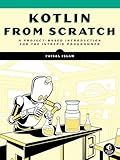
Kotlin from Scratch: A Project-Based Introduction for the Intrepid Programmer


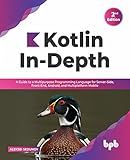
Kotlin In-Depth: A Guide to a Multipurpose Programming Language for Server-Side, Front-End, Android, and Multiplatform Mobile (English Edition)


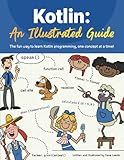
Kotlin: An Illustrated Guide


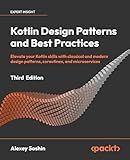
Kotlin Design Patterns and Best Practices: Elevate your Kotlin skills with classical and modern design patterns, coroutines, and microservices


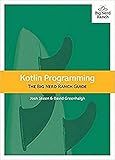
Kotlin Programming: The Big Nerd Ranch Guide


Sealed classes in Kotlin are used to represent restricted class hierarchies, where a class can have only a limited number of subclasses. They are declared using the sealed modifier before the class declaration.
Working with sealed classes involves the following key points:
- Sealed classes can have multiple subclasses, but all of them must be declared within the same Kotlin file where the sealed class is declared.
- Subclasses of a sealed class must maintain their relationship with the sealed class. This means they can be either nested within the sealed class or placed at the same level as the sealed class within the file.
- Sealed classes define a closed set of subclasses that are known at the time of compilation. This means that the sealed class cannot have any new subclasses added after its initial declaration.
- Sealed classes are commonly used in combination with when expressions to handle all possible subclasses in a concise manner. This is particularly useful when working with a limited set of possibilities and wanting exhaustive checks.
When working with sealed classes, here are some practical use cases:
- Representing state: Sealed classes can be used to represent different states or variations of an object. Each subclass can define a specific state and provide relevant methods and properties.
- Handling result types: Sealed classes are useful when defining result types that can have either a success or failure state. Each subclass can represent a specific outcome with associated data or error information.
- Managing event handling: Sealed classes are often used to define event types. Each subclass can represent a different event and can be used to handle specific event types in a clean and organized way.
By using sealed classes, you can create a hierarchical structure for classes that prevents uncontrolled class extension, provides a clear representation of possible class variations, and enables concise and exhaustive checks when working with subclasses.
What is the use of the 'is' keyword with sealed classes in Kotlin?
In Kotlin, the is keyword is used to check the type of an object at runtime. When used with sealed classes, it helps to perform exhaustive smart casts.
A sealed class is a special kind of abstract class that restricts the inheritance hierarchy to a defined set of subclasses. It means that any subclasses of a sealed class must be declared within the same file. This allows the Kotlin compiler to know all possible subclasses at compile-time.
The is keyword can be used with sealed classes in combination with when expressions to determine the type of an object and perform specific actions based on that type. Since the compiler knows all the subclasses of a sealed class, it can ensure that all possible cases are covered in the when expression.
Here's an example:
sealed class Result data class Success(val data: String) : Result() data class Error(val message: String) : Result()
fun processResult(result: Result) { when (result) { is Success -> println("Data: ${result.data}") is Error -> println("Error: ${result.message}") // No else branch needed as all possibilities are covered } }
In the above example, the when expression checks the type of result using the is keyword. Since Result is a sealed class with two subclasses Success and Error, the compiler ensures that all possible cases are covered. Therefore, there is no need for an else branch.
Using the is keyword with sealed classes allows for more concise and safer code. It eliminates the need for explicit type checks and casting, as the compiler guarantees that only the defined subclasses exist.
How to override methods in sealed classes in Kotlin?
In Kotlin, sealed classes are used to represent restricted class hierarchies. By default, the methods in a sealed class are not open for overriding. However, there is a way to override methods in sealed classes by using the open modifier. Here's how you can do it:
- Define a sealed class with a method to be overridden:
sealed class MySealedClass { open fun myMethod() { println("Parent class method") } }
- Create a subclass of the sealed class and override the method:
class MySubClass : MySealedClass() { override fun myMethod() { println("Subclass method") } }
- You can now create an instance of the subclass and call its overridden method:
val obj = MySubClass() obj.myMethod() // Output: "Subclass method"
Note that when you override a method in a subclass of a sealed class, it should also be marked as open if you want to allow further overriding in its subclasses.
How to use sealed classes to handle different types of responses in Kotlin?
In Kotlin, sealed classes are used to represent restricted class hierarchies where all the subclasses are known and enumerated. They are particularly useful when dealing with different types of responses. Here's how you can use sealed classes to handle different types of responses in Kotlin:
- Define a sealed class: First, create a sealed class that represents the different types of responses you want to handle. Each subclass will represent a specific response type. For example: sealed class ApiResponse { data class Success(val data: Any) : ApiResponse() data class Error(val error: String) : ApiResponse() object Loading : ApiResponse() }
- Handle the responses: When you make an API call or receive a response, you can use a when expression to handle the different response types. Example: val response: ApiResponse = makeApiCall() when (response) { is ApiResponse.Success -> { val data = response.data // Handle success response } is ApiResponse.Error -> { val error = response.error // Handle error response } ApiResponse.Loading -> { // Handle loading state } } Here, depending on the type of response received, you can extract and use the relevant response data or error message within the corresponding code block.
Sealed classes ensure that all the possible response types are handled exhaustively. In the above example, if you forget to handle any of the response types within the when expression, the compiler will throw an error. This helps avoid runtime errors and makes your code more robust.
Using sealed classes for handling different response types provides an intuitive and concise way to represent and handle various scenarios, making your code more readable and maintainable.
What is a sealed class with no subclasses in Kotlin?
In Kotlin, a sealed class is a class that can be subclassed, but it restricts the number of possible subclasses to a fixed set defined within the class itself. To ensure that the class has no other subclasses outside its own declaration, a sealed class can be defined with the sealed keyword and all its subclasses must be defined within the same file.
Here's an example of a sealed class with no subclasses:
sealed class Result { data class Success(val data: String) : Result() object Error : Result() }
In this example, the Result class is declared as sealed, and it has two subclasses defined within its declaration: Success and Error. Since all possible subclasses are defined within the same file, it guarantees that no other subclasses can be created from outside the class.
Sealed classes are often used in conjunction with when expressions (a replacement for the switch statement) to provide a comprehensive handling of all possible subclasses within the same block of code.
